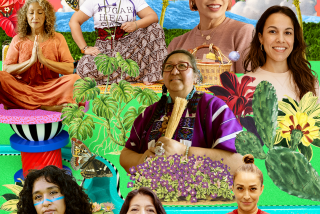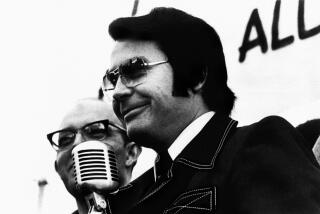Compelling Look at the Alternative
- Share via
The emergence of alternative medical practices has changed the way many Americans approach health care. This series by award-winning producer and writer Gail Harris explores how consumers are using such practices alongside conventional care and brings to mind Bill Moyers’ 1993 series, “Healing and the Mind.”
Harris spent two years putting the series together, and she hits upon all the major issues in alternative medicine, including stress control, aging, healing and prayer, nutrition and psychological health. If there is a downside to the series, it is that there are few surprises; she interviews the usual suspects, such as Drs. Larry Dossey and Andrew Weil. Moreover, this is not a critical look at alternative medicine. Harris does not spend much time pointing out the potential problems related to accessing unproven health remedies. However, much of the series is compelling, such as the story of cancer patient Lenny Zakim.
Harris follows Zakim as he pursues traditional therapy as well as alternative healing therapies. The segment demonstrates why so many consumers find alternative therapies appealing. A companion book, “Body & Soul: Your Guide to Health, Happiness and Total Well-Being” (Kensington Books), arrives in stores this month. More information about “Body & Soul” can be found at https://www.pbs.org.
*
ALTERNATIVE HEALTH CARE: Medicine, Miracle or Mirage
Michael S. Goldstein
Temple University Press
$19.95; 278 pages
*
In the midst of the debate over the value of alternative medicine, it’s hard to find someone who can look at the issue with a degree of objectivity. Conventional medicine tends to be skeptical, and alternative health practitioners tend to be overenthusiastic. Michael S. Goldstein’s book offers a more reasonable presentation of alternative medicine, explaining why the field has gained popularity in recent years. Although Goldstein, a professor of public health and sociology at UCLA, is clearly supportive of alternative medicine, he provides a logical explanation for its popularity that might enlighten its opponents. He explains alternative health care in the context of the problems with conventional health care. Indeed, looking at how these two worlds fit together or react to each other yields valuable information on how each field can respond better to patients.


